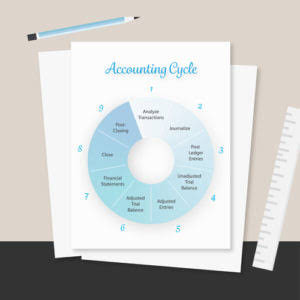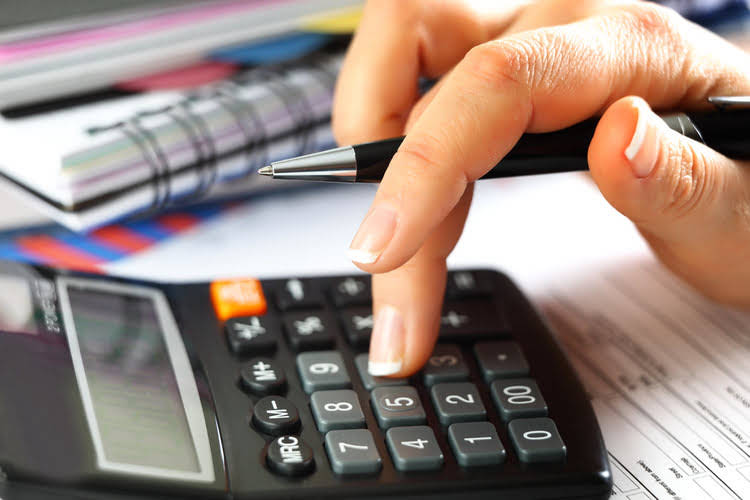
In 2006, she obtained her MS in Accounting and Taxation and was diagnosed with Hodgkin’s Lymphoma two months later. Instead of focusing on the fear and anger, she started her accounting and consulting firm. In the last 10 years, she has worked with clients all over the country and now sees her diagnosis as an opportunity that opened doors to a fulfilling life. Kristin is also the creator of Accounting In Focus, a website for students taking accounting courses. Since 2014, she has helped over one million students succeed in their accounting classes. The following chart shows how the direct write-off method would account for the uncollectible account.
- When a small business believes an invoice is uncollectible, they can instantly debit the Bad Debts Expense account and credit Accounts Receivable using the direct write-off method.
- It helps reflect the actual amount of revenue and assets in the books of the business entity.
- The cost of inventory should include all costs necessary to acquire the items and to get them ready for sale.
- This account balance or this calculated amount will be matched with the sales amount on the income statement.
- Therefore, the business would credit accounts receivable of $10,000 and debit bad debt expense of $10,000.
Bad Debt Allowance Method
It reduces the accounts receivable by $2,000 and also reduces the reserve in the allowance for doubtful accounts. As you can see, writing off an account should only be done if you are completely certain that the full account is uncollectable. For instance, the matching principle isn’t really followed because the loss from this account is recognized several periods after the income was actually earned. For example, writing off a large and material account immediately might not be proper. He owed you an amount of $400 against purchases he made in 2017 thathe can’t pay anymore since direct write-off method his bank loans exceeded his net assets. Then the company writes off those unrecoverable accounts receivable from its book.
- In this case, the accounts receivable account is reduced by $3,000 and is recorded as a bad debt expense.
- Since the current balance is $17,000, we need to increase the balance to $31,800.
- Therefore, we have to consider which of our accounts would appear on the balance sheet with Accounts Receivable.
- This method follows the matching principle and is therefore accepted under GAAP.
- In other words, bad debt charges can be deducted from taxable income on a company’s tax return.
Recovery of Account under Allowance Method

We have helped accounting teams from around the globe with month-end closing, reconciliations, journal entry management, intercompany accounting, and financial reporting. Bad debt expense also helps companies identify which customers default on payments more often than others. On March 31, 2017, Corporate https://www.bookstime.com/tax-rates/california Finance Institute reported net credit sales of $1,000,000. Using the percentage of sales method, they estimated that 1% of their credit sales would be uncollectible.
- This method allows you to create a provision or reserve account for doubtful debts credited every year against accounts receivable.
- Additionally, fictitious assets like advertisement expenditures, etc, are always written off because fictitious assets don’t have any fair value.
- Under the allowance method, write-offs are based on estimates—unless there’s conclusive evidence that certain customer accounts are uncollectible.
- For example, Accounts Receivable could be a control account in the general ledger.
- The allowance method offers an alternative to the direct write off method of accounting for bad debts.
- In the context of inventory, net realizable value or NRV is the expected selling price in the ordinary course of business minus the costs of completion, disposal, and transportation.
- Therefore, individuals, self-employed, small corporations as well as large business firms can benefit from tax write-offs.
Reasons Why it is not preferred in the Accounting Profession?

Therefore, the business would credit accounts receivable of $10,000 and debit bad debt expense of $10,000. If the customer is able to pay a partial amount of the balance (say $5,000), it will debit cash of $5,000, debit bad debt expense of $5,000, and credit accounts receivable of $10,000. Direct write-off method is usually only be used by the company that has only a small amount of credit sales or an insignificant balance of receivables.
Write Off Accounts Receivable
Using the direct write-off method can help your business easily manage bad debt if you rarely get uncollected payments. In this article, you’ll learn how to use the direct write-off method for your business and the potential advantages and disadvantages of a direct write-off. The direct write-off method is a simple method where businesses can write off the exact bad debt amount that goes uncollected. The journal entries for this method are further straight-forward and don’t require the complications of a contra-asset account.
- When a customer is identified as uncollectible, we would credit Accounts Receivable.
- The allowance method lets companies estimate bad debts based on what has happened in the past and change the estimate as needed.
- This makes the seller (the supplier) an unsecured creditor, meaning it does not have a lien on any of the buyer’s assets—not even on the goods that it just sold to the buyer.
- That is why unless bad debt expense is insignificant, the direct write-off method is not acceptable for financial reporting purposes.
InvoiceBerry Blog
Such a company, however, may lose out on sales to competitors who offer to sell on credit. HighRadius Autonomous Accounting Application consists of End-to-end Financial Close Automation, AI-powered Anomaly Detection and Account Reconciliation, and Connected Workspaces. Delivered as SaaS, our solutions seamlessly integrate bi-directionally with multiple systems including ERPs, HR, CRM, Payroll, and banks. Our AI-powered Anomaly Management Software helps accounting professionals identify and rectify potential ‘Errors and Omissions’ throughout the financial period so that teams can avoid the month-end rush. The AI algorithm continuously learns through a feedback loop which, in turn, reduces false anomalies. Accounting Periods and Methods We empower accounting teams to work more efficiently, accurately, and collaboratively, enabling them to add greater value to their organizations’ accounting processes.

B2B Payments

Though calculating bad debt expense this way looks fine, it does not conform with the matching principle of accounting. That is why unless bad debt expense is insignificant, the direct write-off method is not acceptable for financial reporting purposes. Under the percentage of sales basis, the company calculates bad debt expense by estimating how much sales revenue during the year will be uncollectible. Instead of creating a provision on 2018, Nina will write off thebad debt in 2019 by debiting the bad debt expense account and crediting theaccounts receivable as shown below. To keep the business’s books accurate, the direct write-off method debits a bad debt account for the uncollectible amount and credits that same amount to accounts receivable.
